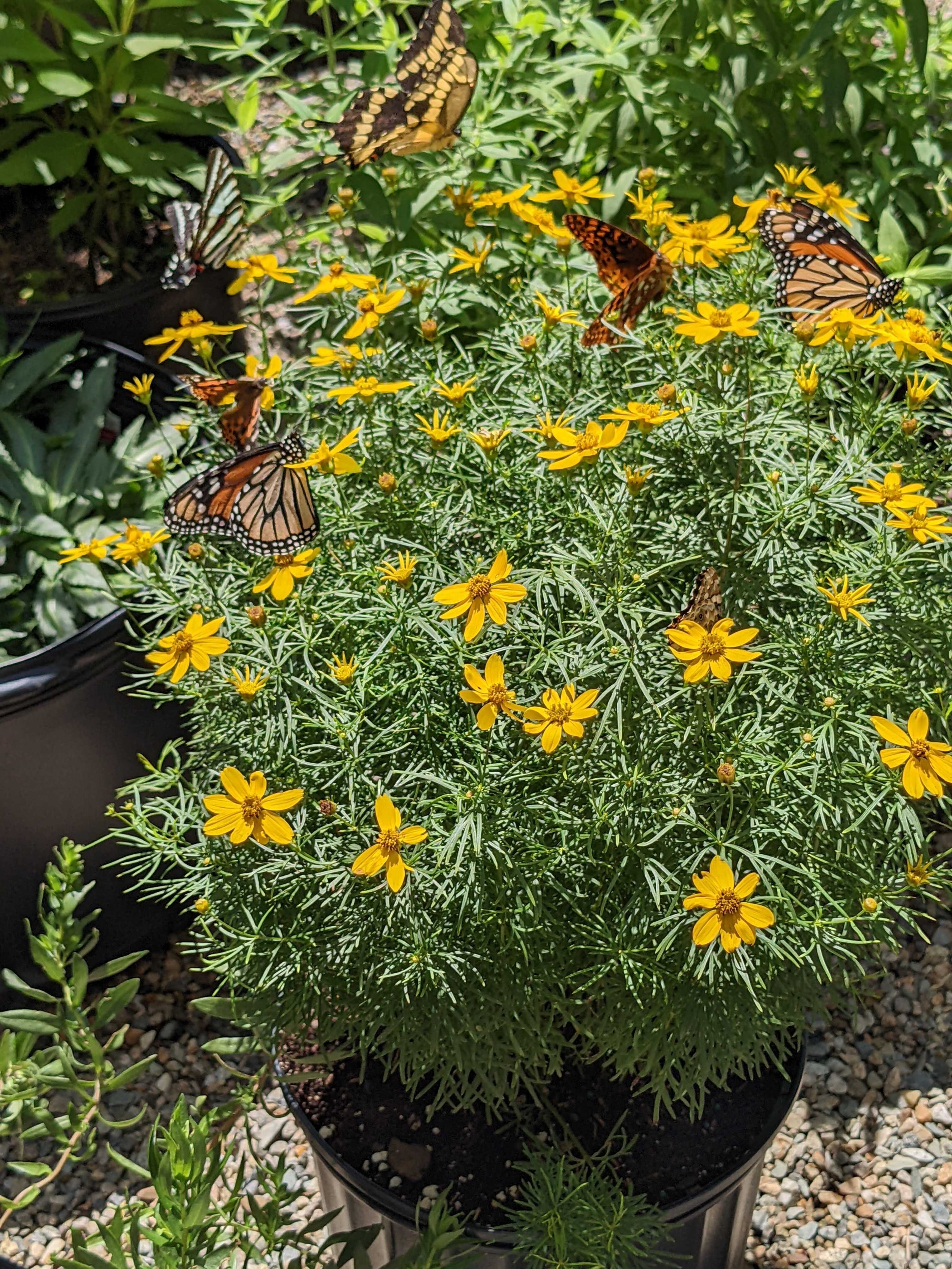Preparing for Pollinators: 5 tips for getting your yard ready this spring!
Kara Davidson
A pollinator garden.
#1 Leave or Use the Leaves!
While “leave the leaves” is important advice for the fall, it is still applicable in the spring! Leaves provide important shelter and warmth for insects during the winter months and leaving them in your yard is one of the most beneficial things you can do for pollinators in the fall. However, leaves are also amazing for building organic matter and moisture retention which contribute to healthy soil.
In areas where you have a more natural look in your yard, consider leaving the leaves where they fall. If you have a lawn or other more manicured areas in your yard, consider adding the leaves to beds as mulch (they are great for keeping away weeds!) or into a compost bin to create healthy soil to use in your yard. Additionally, making a pile of leaves in the corner of your yard and deeming it a “pollinator habitat” is a great way to help the environment.
#2 Think of the Birds!
Not only are birds beautiful and fun additions to your backyard habitat, but birds are also pollinators too (especially hummingbirds), and attracting them to your yard helps the local ecosystem.
Skip the bird feeders in the spring! Bird feeders are great in the fall (during migration) through very early spring. However, birds don’t need your help in the spring and summer. Further, it is better for some birds to be consuming insects in the spring, especially if they are feeding their young. Instead, consider a log pile. A small pile of logs in your yard acts as an insect hotel providing a great place for birds to dine!
Birds also need shelter. Instead of hanging feeders, consider putting up birdhouses that will provide shelter and encourage birds to stay longer in your yard.
What is the number one thing you can do to attract birds to your yard and keep them healthy? Add sources of clean, fresh water! Small ponds and bird baths that are cleaned regularly are very beneficial. Ann recommends using saucers- like the kind that come for the bottom of plant pots- filled daily with fresh water. This is particularly important in the winter, but applicable in the summer too.
Be sure to be consistent with your offerings, so the birds know they can come back to your yard. They will stop by more often this way!
#3 Reflect, Research & Plan
Take some time to walk around your yard. What worked well last year? What didn’t work well? What would you like to improve upon? What do you want from your yard? Is it mostly a place to relax? Do you want to create a safe place for the kids to play? Do you want to attract more pollinators? Do you want to improve the local ecology? Take some time to reflect and figure out what you want to prioritize this year.
Create a list of the plants you already have and research each one. Is it native? How does it benefit your yard? Decide if you want to keep the plant. If you decide to keep it, how can you help it be happy and healthy? If it attracts a specific type of pollinator to your yard, what other plants can you add to your yard to benefit that type of pollinator? For example, butterflies need both nectar sources and host plants. If you have a host plant for a particular type of butterfly, be sure to plant some nectar sources it will enjoy.
Research some native plants that will attract the wildlife you’d like to your yard. For example, milkweed will help attract monarch butterflies to your yard. Milkweed is easy to grow from seed, but it is sometimes hard to locate the seeds. You can find a pretty compact version of milkweed with pretty orange flowers that is sometimes called butterfly weed. If adding milkweed to your yard to attract butterflies be sure to get at least 6 individual plants. Not only do you need to provide enough food for the caterpillars, but a cluster of plants provides better shelter as they need to hide from predators such as birds and wasps. Another great native to add to your yard is Hoary verbena (Verbena stricta) which is easy to grow, a host plant for the Common Buckeye butterfly, and a great nectar source for other butterflies.
Develop a plan! Make lists of the plants you’d like, draw out your yard, and plan where everything will go.
Butterflies feasting on the nectar of a coreopsis plant.
#4 Keep it Small & Simple
It’s best to start small and continue to add a little bit more each year. You don’t want to get overwhelmed and not be able to continue to upkeep your yard. Focus on the plants you have first, and make small changes each year that work towards your goal for your backyard.
#5 Aim for Pesticide Free
The last thing you want to do is attract pollinators to your backyard only to unintentionally poison them. Lots of commercially available plants are doused in harmful pesticides before reaching a retail outlet. Often plants are not properly labeled as to what pesticides they were exposed to.
You can help limit the pesticides in your yard by using a trusted source for your plants such as a local nursery or someone you know who raises plants, when available. Another excellent method is to raise the plants from seed yourself so you can control exactly what they are exposed to. And of course, be careful to not use herbicides or insecticides in your yard. Try to manage any issues you encounter through other means.
Golden Alexander in full summer bloom.
Thanks for reading and good luck! Leave us a comment with your gardening plans for this season.
Resources:
https://xerces.org/blog/leave-the-leaves



